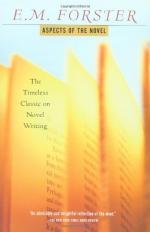
|
| Name: _________________________ | Period: ___________________ |
This test consists of 15 multiple choice questions and 5 short answer questions.
Multiple Choice Questions
1. Who is the second hypothetical person to whom Forster poses the question, "What does a novel do?"
(a) A bus driver.
(b) A writer.
(c) A golfer.
(d) A zookeeper.
2. How many hours of the day does Forster suppose should be devoted to love?
(a) Twenty-four.
(b) Five.
(c) Two.
(d) Eight.
3. What is the name of the book that William George Clark wrote about his time in Spain?
(a) Galapogas.
(b) Gazpacho.
(c) Gauchos.
(d) Groucho.
4. In The Amorous Adventures of Moll Flanders, the character is _____________.
(a) Secondary.
(b) Existential.
(c) Arbitrary.
(d) Everything.
5. What is the name of the young man in the first sentence of The Antiquary?
(a) Laurence.
(b) Edie.
(c) Lovel.
(d) Jonathon.
6. Which characters in The Antiquary does Forster say Scott introduced artlessly?
(a) The Glenallans.
(b) The Glenwoods.
(c) The Gallenhalls.
(d) The Gallentry.
7. Which poet does Forster say has made eating somewhat sensuous in his poems?
(a) Milton.
(b) Meredith.
(c) Browning.
(d) Shakespeare.
8. Forster starts his discussion of round characters with the novel ____________.
(a) Emma.
(b) War and Peace.
(c) Mansfield Park.
(d) Wuthering Heights.
9. Who does Forster say is the real hero of The Old Wives' Tale?
(a) Time.
(b) Character.
(c) Plot.
(d) Value.
10. How does Forster say he would answer the question, "What does a novel do?"
(a) Angrily.
(b) Sadly.
(c) Disgustedly.
(d) Jubiently.
11. What year does Charles Dickens publish Great Expectations?
(a) 1905.
(b) 1845.
(c) 1901.
(d) 1860.
12. Whose characters does Forster describe as being as "flat as a photograph"?
(a) Charles Dickens.
(b) Jane Austen.
(c) Leo Tolstoy.
(d) H.G. Wells.
13. Forster says that neither ________ nor anticipation is interested in Father Time.
(a) Loss.
(b) Wisdom.
(c) Memory.
(d) Love.
14. Forster says that permanency is one of the illusions attached to what?
(a) Death.
(b) Birth.
(c) Sleep.
(d) Love.
15. What does Scott accomplish in the first sentence of The Antiquary?
(a) Setting the scene.
(b) Boring the reader.
(c) Determine the plot.
(d) Introducing the characters.
Short Answer Questions
1. What is the name of the Jane Austen character that Forster uses to illustrate "life like" aspects of characters?
2. Forster says he is not analyzing The Antiquary, but rather _____________ it.
3. Considering literature on the basis of time periods is the act of the ________________.
4. Flat characters are seldom used in what type of novels?
5. The critic Norman Douglas writes an open letter to which author?
|
This section contains 363 words (approx. 2 pages at 300 words per page) |

|




